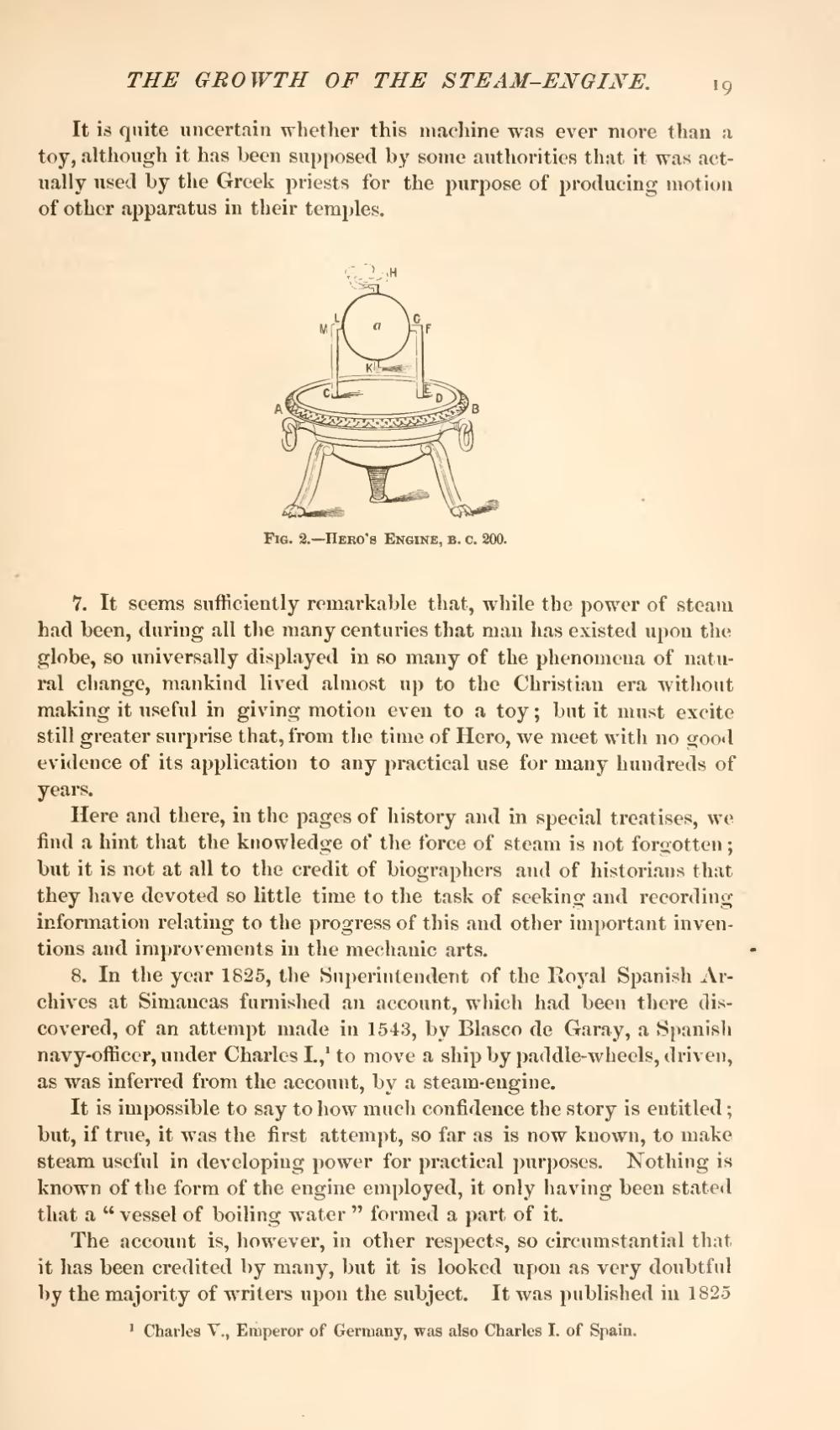It is quite uncertain whether this machine was ever more than a toy, although it has been supposed by some authorities that it was actually used by the Greek priests for the purpose of producing motion of other apparatus in their temples.

Fig. 2. Hero's Engine, b. c. 200.
7. It seems sufficiently remarkable that, while the power of steam had been, during all the many centuries that man has existed upon the globe, so universally displayed in so many of the phenomena of natural change, mankind lived almost up to the Christian era without making it useful in giving motion even to a toy; but it must excite still greater surprise that, from the time of Hero, we meet with no good evidence of its application to any practical use for many hundreds of years.
Here and there, in the pages of history and in special treatises, we find a hint that the knowledge of the force of steam is not forgotten; but it is not at all to the credit of biographers and of historians that they have devoted so little time to the task of seeking and recording information relating to the progress of this and other important inventions and improvements in the mechanic arts.
8. In the year 1825, the Superintendent of the Royal Spanish Archives at Simancas furnished an account, which had been there discovered, of an attempt made in 1543, by Blasco de Garay, a Spanish navy-officer, under Charles I.,[1] to move a ship by paddle-wheels, driven, as was inferred from the account, by a steam-engine.
It is impossible to say to how much confidence the story is entitled; but, if true, it was the first attempt, so far as is now known, to make steam useful in developing power for practical purposes. Nothing is known of the form of the engine employed, it only having been stated that a "vessel of boiling water" formed a part of it.
The account is, however, in other respects, so circumstantial that it has been credited by many, but it is looked upon as very doubtful by the majority of writers upon the subject. It was published in 1825
- ↑ Charles V., Emperor of Germany, was also Charles I. of Spain.
